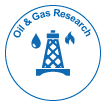Nosso grupo organiza mais de 3.000 Séries de conferências Eventos todos os anos nos EUA, Europa e outros países. Ásia com o apoio de mais 1.000 Sociedades e publica mais de 700 Acesso aberto Periódicos que contém mais de 50.000 personalidades eminentes, cientistas de renome como membros do conselho editorial.
Periódicos de acesso aberto ganhando mais leitores e citações
700 periódicos e 15 milhões de leitores Cada periódico está obtendo mais de 25.000 leitores
Indexado em
- Google Scholar
- RefSeek
- Universidade Hamdard
- EBSCO AZ
- OCLC – WorldCat
- Publons
- Euro Pub
Links Úteis
Diários de acesso aberto
Compartilhe esta página
Abstrato
Lead-free perovskites based nanostructured tandem solar cell
Mohammad Kamal Hossain
Tandem solar cell combining silicon and perovskites is known
to be a wonderful match for efficient solar cell design. However,
perovskites is suffering for its stability and silicon is supposed to
be superior in nanostructure features. Therefore, in this communication,
we are proposing an innovative approach to devise silicon
based nanostructures fabricated from top-down strategy and
combining the same with lead-free perovskite that was synthesized
in ambient environment. Preliminary results confirmed successful
and reproducible fabrication of silicon nanopyramids (Si-NPys)
and nanowires (Si-NWs). Morphology of the same nanostructures
was confirmed by scanning electron microscopy. Further finite different
time domain (FDTD) analysis in different solar spectrum
was carried out to understand absorption depth profile, energy
flux distribution, electromagnetic field localization and exciton
generation rate distribution happened to be available in such
nanostructures and influence in exciton generation in perovskite
absorbing materials deposited atop in tandem configuration. Figure
as shown below depicts the evidence of Si-NPys of Si-NWs
growth using Si wafer as initial materials. It is noteworthy to mention
that the dimension of such silicon nanostructures depends
on experimental conditions such as temperature, precursor concentration,
etching time etc.FDTD simulation suggested confined
exciton generation rate distribution in such nanometric structures
and thus active absorbing material such as perovskite would get
enormous influence thereof.Authors acknowledge CoRERE, RI,
KFUPM, Dhahran 31261, Saudi Arabia. MKH acknowledges
Deanship of Scientific Research (DSR) at King Fahd University
of Petroleum & Minerals (KFUPM) for funding this work
through project No. IN151003.
Diários por Assunto
- Agro e Aquicultura
- Alimentação e Nutrição
- Bioquímica
- Ciência da Computação
- Ciência de materiais
- Ciencias ambientais
- Ciências Clínicas
- Ciências Farmacêuticas
- Ciências gerais
- Ciências Médicas
- Ciências Sociais e Políticas
- Ciências veterinarias
- Economia e Contabilidade
- Enfermagem e cuidados de saúde
- Engenharia
- Engenheiro químico
- Física
- Genética e Biologia Molecular
- Geologia e Ciências da Terra
- Gestão de negócios
- Imunologia e Microbiologia
- Informática
- Matemática
- Química
Revistas clínicas e médicas
- Anestesiologia
- Assistência médica
- Biologia molecular
- Cardiologia
- Cirurgia
- Dermatologia
- Diabetes e Endocrinologia
- Doenças infecciosas
- Enfermagem
- Fisioterapia e Reabilitação
- Gastroenterologia
- Genética
- Hematologia
- Imunologia
- Medicamento
- Medicina Reprodutiva
- Microbiologia
- Nefrologia
- Neurologia
- Odontologia
- Oftalmologia
- Oncologia
- Ortopedia
- Pediatria
- Pesquisa Clinica
- Pneumologia
- Psiquiatria
- Toxicologia

 English
English  Spanish
Spanish  Chinese
Chinese  Russian
Russian  German
German  French
French  Japanese
Japanese  Hindi
Hindi